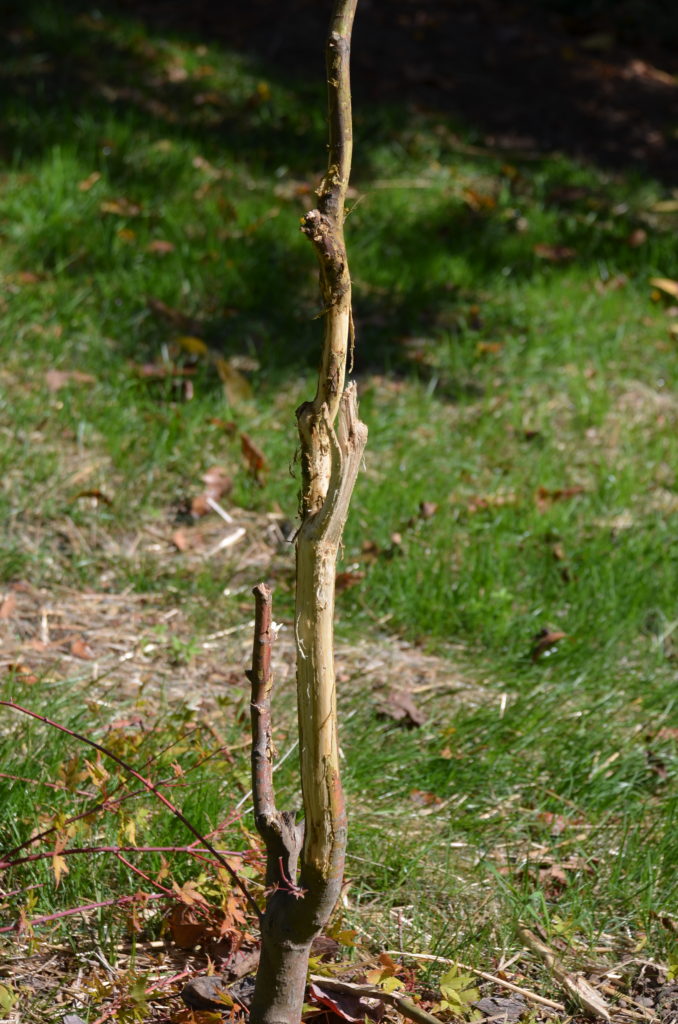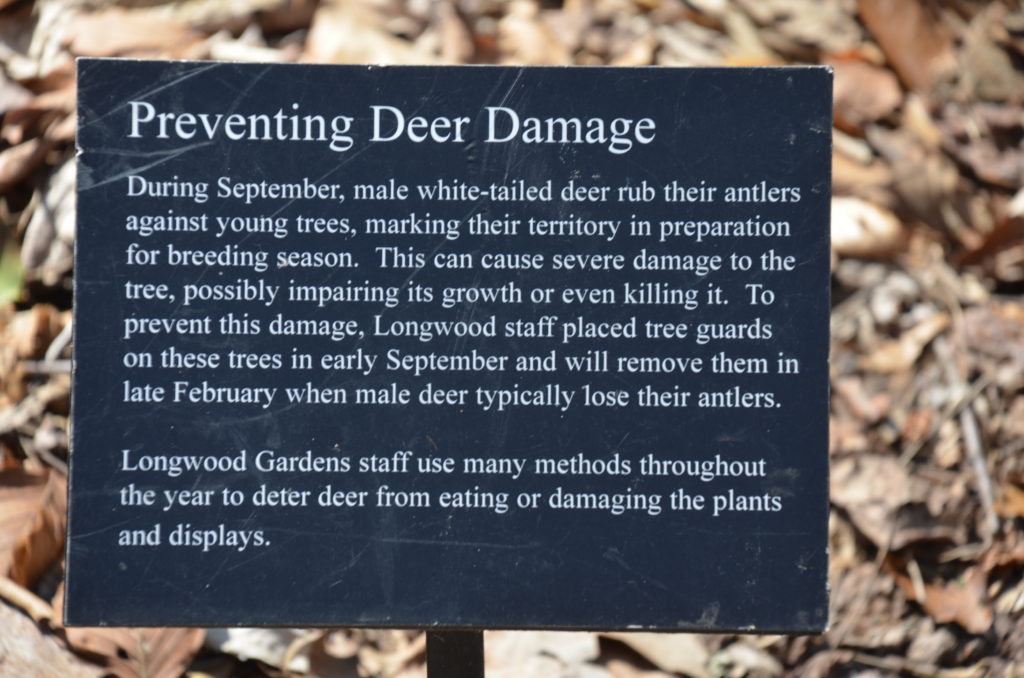
We live at a time that deer population numbers have grown out of control in many areas of the U.S. The internet lists plants that “DEER DON’T EAT”. However, deer have not read these lists, and secondly, a starving deer will eat just about anything. An adult deer may eat 5-6 pounds of plant material each day. Hungry deer can stripped a landscape clean, particularly it contains a plant smorgasbord that they love such as
your fabulous collection of hostas.
In some states ridding deer from a suburban landscape may also be a health concern. Deer harbor ticks that can carry Lyme disease and Rocky Mountain spotted fever.
Deer can be effectively managed by mechanical means. This typically involves fencing around your property or an entire subdivision. The fence must be tall enough to keep leaping deer out—at least 7 feet high. Fencing is a very expensive and several secondary alternatives are listed below.

Many property owners spray deer repellents on valuable plants. No repellent is foolproof but several have proven to be effective short term remedies to reduce deer feeding if used regularly and correctly timed.
Basically, there are two ways to keep deer away from your landscape: 1. Deterrents (odor) and mechanical types:
Odor Deterrents their effectiveness varies largely on how quickly the deer adjust to them. Some may work only a few weeks. Examples of deterrents: human hair, decaying fishheads, blood meal, garlic, hot pepper, fabric softener, processed sewage, motel bar soap, and many others.
Deer Retardants And Repellents that keep deer away: many formulations are available at garden centers and hardware stores nationwide.
Plants With Thorny Branches Repel Rabbits and Deer such as hawthorns (Crataegus), barberries (Berberis spp.), Trifoliate orange (Poncirus trifoliata), and roses (Rosa spp.).
Annual Flowers with aromatic fragrances repel rabbits such as Sagebrush or wormwood (Artemisia), Snapdragon (Antirrhinum), Zinnia (Zinnia), Cardinal flower (Lobelia), Wax Begonia (B. semperflorens), zonal geranium (Pelargonium), Vinca (Catharanthus), Ageratum, Calendula (pot marigold), sunflowers (Helianthus).
Mechanical Deterrents – examples include:
Floodlights
Noise-makers – radios, fireworks, whistles, and others
Reflective objects such as aluminum pie tins, party streamers
Electric wires, fishing line, sprinklers
Fences – including Electrified fences
Grates and Moats
Hungry deer will eat almost anything, even those plants listed on the “won’t eat” list you may find on the internet. Eliminate favorite areas, like small fruit and vegetable gardens or home orchards. Deer in different parts of the country also have different food palates.

 Posted in
Posted in 
